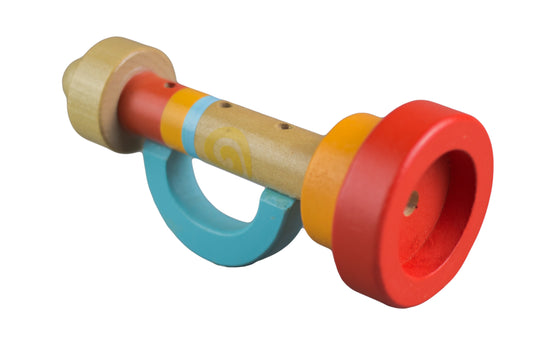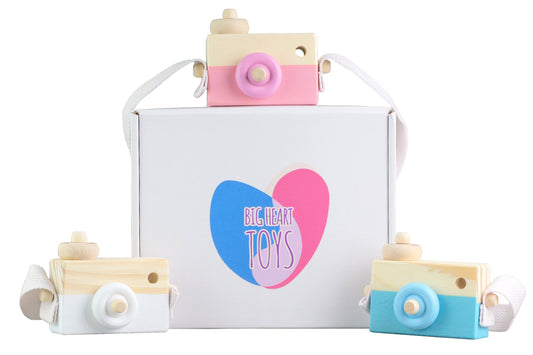Emotional responses play a part in everyday life and are a big part of our overall health and well-being. Even adults struggle with emotional control now and then, but children need some extra guidance from the caring adults in their lives.
Kids receive emotional stimuli constantly. Since they are so young, despite having a full emotional experience, they don’t yet know healthy or proper tools for handling their negative feelings and positive emotions. These tools are called emotional regulation skills.
This is when we, as their parents, need to help guide our children and help them control emotions in their daily lives. We can also take these five different ways of emotional control and implement them into our own lives to help model positive behavior, even during difficult times.
Breathing Techniques
When your child enters into emotional dysregulation, which sometimes looks like tantrums, one helpful tactic is to bring them back to their breath. These practices, which are often used in behavioral therapy, help to re-regulate their bodies and come down from a heightened emotional state.
It brings the mind back to a place they can think instead of reacting. With dysregulation, your child’s fight or flight has been activated by strong emotions or possible negative thoughts.
Breathing Techniques for Children:
-
Guided Breathing: This is when you have your child mimic your breaths, breathing in and out at the same rate/amount you model. This practice slows their heart rate after an emotional outburst.
-
Ballon Breath: This is when your child pretends to blow up a balloon with a deep breath in through the nose and then pushes out the air through pursed lips.
-
Blow Bubbles: This is like balloon breath but comes with a different mental image. Children will take deep breaths in through their mouths and out of the mouth with pursed lips, pretending to blow bubbles.
-
Lions Roar: Take a deep breath in through the nose, then push it out with a loud big “ahhh” sound, mouth wide open like a lion does to roar. Some children may want to stick their tongue out during this practice; silliness can help boost a sad mood!
-
Engine Start: Breathe in through the mouth or nose, then blow out with relaxed lips. Make a vibrating sound, similar to an engine running.
Caregivers may want to teach these breathing techniques during a calm time and practice these breaths during times they feel negativity or difficult emotions. After your child tries these tips, follow up with a conversation about how they felt and what may have triggered their big emotions.
Daily Mantras
Start a mantra for the day and implement it with the morning schedule of self-care that your child practices in the morning, like brushing their teeth. Children need help remembering routines every day. You know this as a caregiver who has reminded them four different times in one day about cleaning up their room. When your child forms a daily habit like a mantra, it can start the day right emotionally.
One positive thought will lead to another positive thought and action. To encourage your child to meditate and create a mantra for the day, try joining in as well! You can even change it up if the mantra starts feeling stale or isn’t related to their current experiences. Or some families just like to switch it up on their schedule; for example, every three months, a new mantra will be honored.
Mantra Examples:
-
I am peaceful and loving
-
I can control myself, but not others
-
This new day brings me joy and opportunities
-
I am capable of understanding and handling my feelings
-
I will treat others as I would like to be treated
-
I do not need to be perfect because I am learning
-
There is nothing to fear because I am safe, supported, and loved
-
When I am mad, I can stop and then breathe out my anger
-
It is okay to feel sad
-
Bad feelings will come and go
Social Emotional Play
Play is a powerful tool for children, and studies have shown that a child will understand concepts more quickly if play is involved. Learning through play is far more powerful than memorizing worksheets.
Role and Pretend Play
The best kind of play for emotional learning is role play or dramatic play. This is done by mimicking real-life-like (but imaginary) situations with toys, including puppets, dolls, costumes, pretend kitchens, forts, and so on.
Reading
Reading is another form of play that engages and teaches your child. Try a book on emotions that allows your child to ponder their feelings and follow up with an open dialogue with any questions your child may have.
Board Games
Board games are a fun way to teach your child about emotions and how to regulate any potential negative feelings. You have winners and losers in this kind of play, so It’s an excellent opportunity to teach them how to be a good sport whether they win or lose.
Emotional Regulation Strategies
Emotional reactions are real and can be strong for anyone. When you understand what the emotion is that you’re feeling, then you can prepare how to regulate that particular emotion.
Like with sports or any new skill, emotional control is learned through practice. In this case, the practice is emotional regulation strategies.
When getting started, let kids know they have many options and find what personally works for them. Just like scientists, this might take a little time to investigate.
Here are a few techniques to try out to keep a child calm:
-
Move: even a subtle change in the body position and movement helps expel negative energy and can change a child’s mood for the better.
-
Touch: calming sensory toys that have different textures and repetitive motions like a pop or fidget toy, try kinetic sand to squish and hold.
-
Weighted tools: bear hugs, weighted gel mats, a weighted blanket, or textured crochet buddies.
-
Vigorous movements: painting, dancing, or jumping
-
Look at pleasant things: art, picture books, watch a lava lamp, or gaze out the window.
-
Listen to pleasant things: animal noises, white noise, or your child's favorite music.
These emotional self-regulated suggestions will help soothe the five senses when all are practiced on a daily basis.
Mindfulness Practice
Mindfulness is a part of social-emotional learning that helps with the overall emotional intelligence of a child. Educators are bringing this form of emotional intelligence into the classrooms. Social-emotional skills help with decision-making, self-management, awareness of self and others, and even develop relationship skills.
It’s about being fully present in the moment with no judgments. When we can learn to be present, then it is easier to guide our emotions into a calm place. We can see and think about things as they happen instead of worrying about the future.
Here are some kid-friendly mindfulness practices:
-
Guided yoga.
-
Pretend to be an animal in different settings for three to five minutes.
-
Think about a color and what it might feel like to touch it as they sit criss-cross applesauce. Ponder how you might breathe and sit when feeling that color. This can be a practice in positive or negative emotions.
-
5, 4, 3, 2, 1: They tell you five things they see, four things they can hear, three things they can touch, two things they can smell, and one thing they could taste. Use your immediate surroundings to connect in that moment.
Mindfulness helps your child understand the environment around them and how it affects their mood. When your child practices mindfulness, they’ll feel more secure.
Unique Solutions for Unique Situations
Today we covered five easy steps for your little ones; you now have the tools to give them and model. Emotional health is important for the whole family and will lead to positive experiences outside of the family dynamics as well. Modeling good emotional control is a wonderful way to lead your child by example.
Children have vast, complex emotional lives. However, since the human brain doesn’t fully form until roughly age 25, children lack the ability that adults have to view situations in their full complexity. Not to mention — they certainly lack the wisdom of life experiences too!
Caregivers help their child to learn how to tie their shoes, ride a bike, and learn to read. “Emotional control” is also on that to-do list, and constant practice will help regulate a child’s daily emotions.
With patience, love, care, practice, and more patience, we can build our children into willow trees — they may bend with winds and oncoming storms, but they won’t break.
In time, don’t be surprised when other people stop you in the grocery store and say how well your child is behaving and for other parents to ask you what your secret is! You can then pass on this article to them with the understanding that emotional control is possible and powerful!
Sources:
How Can We Help Kids With Emotional Self-Regulation? | Child Mind Institute
5 Myths About Social Emotional Learning | Understood






